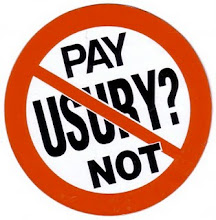Nexus Magazine published an article "The Community Currency Movement."


Nexus Magazine, Vol. 16, No. 5, September-October 2009 published an article "The Community Currency Movement" - authored by Ellen Hodgson Brown, JD.
The article is actually from Chapter 36 of her book titled "The Web Of Debt."
Ellen Hodgson Brown's website: http://www.webofdebt.com
"Local currency and barter systems are on the rise around the world in response to global economic forces and the desire to bring communities together, enhance skills, sell goods and services and stimulate productivity.
Money is a token representing value. A monetary system is a contractual agreement among a group of people to accept those tokens at an agreed-upon value in trade. The ideal group for this contractual agreement is the larger community called a nation, but, if that larger group can't be brought to the task, any smaller group can enter into an agreement, get together and trade." (snip)
(To read the rest of the article go to the Nexus Magazine website and click on Vol. 16, No. 5, and you will see the article listed there as downloadable for a fee of $1.50. Otherwise, it may still be available on news-stands.)
Nexus Magazine website: http://www.nexusmagazine.com
*********************************************************************************
Here is my "Letter To The Editor" re: the article 'The Community Currency Movement."
P. O. Box 9333, Ottawa, Ontario, Canada K1G 3V1
October 26, 2009
The Editor
Nexus New Times Magazine
Dear Editor:
I read with interest the article titled “The Community Currency Movement,” beginning on page 25 of the September-October 2009 iassue of Nexus New Times Magazine. Author, Ellen Hodgson Brown offers abundant background information and a good review of the community currency movement.
It is my intent to point out the one key element about the community currency movement that truly empowers all who choose to participate. Our orthodox, federal money comes into circulation through the process of debt.
When a debtor requests a loan or mortgage, the creditor (commonly the bank) creates brand new money in the amount of the loan or mortgage. This is referred to as the principal portion of the loan or mortgage.
The creditor never creates the ‘interest’ or ‘usury’ portion of any loan or mortgage. Yet, the debtor commonly signs a contract and agrees to repay both the principal and the ‘interest’ or ‘usury’ to the creditor. By one’s signature, the debtor commonly agrees to an impossible contract. This is precisely why there is an ongoing and forever shortage of money in our orthodox economic system - which is currently in a chaotic situation.
Community currencies are free of ‘interest’ or ‘usury.’ No ‘interest’ or ‘usury’ is charged on any negative balance and no ‘interest’ or ‘usury’ is paid on any positive balance. This is why community currencies are commonly referred to as ‘usuryfree.’
All who choose to participate and negotiate local trades or exchanges using a usuryfree community currency as a complement with their diminishing amounts of federal cash are truly empowered. They fully realize that by shopping locally with any usuryfree community currency and changing the way they spend their money, they will have more federal cash left over to pay off their debts - which are constantly growing because of the function of ‘interest’ or ‘usury.’
Readers are encouraged to do the necessary research and learn how to create and spend their own usuryfree community currency in their respective local communities.
Sincerely,
Tom J. Kennedy
The UsuryFree Eye Opener
http://usuryfree.blogspot.com
tom@cyberclass.net


0 Comments:
Post a Comment
<< Home